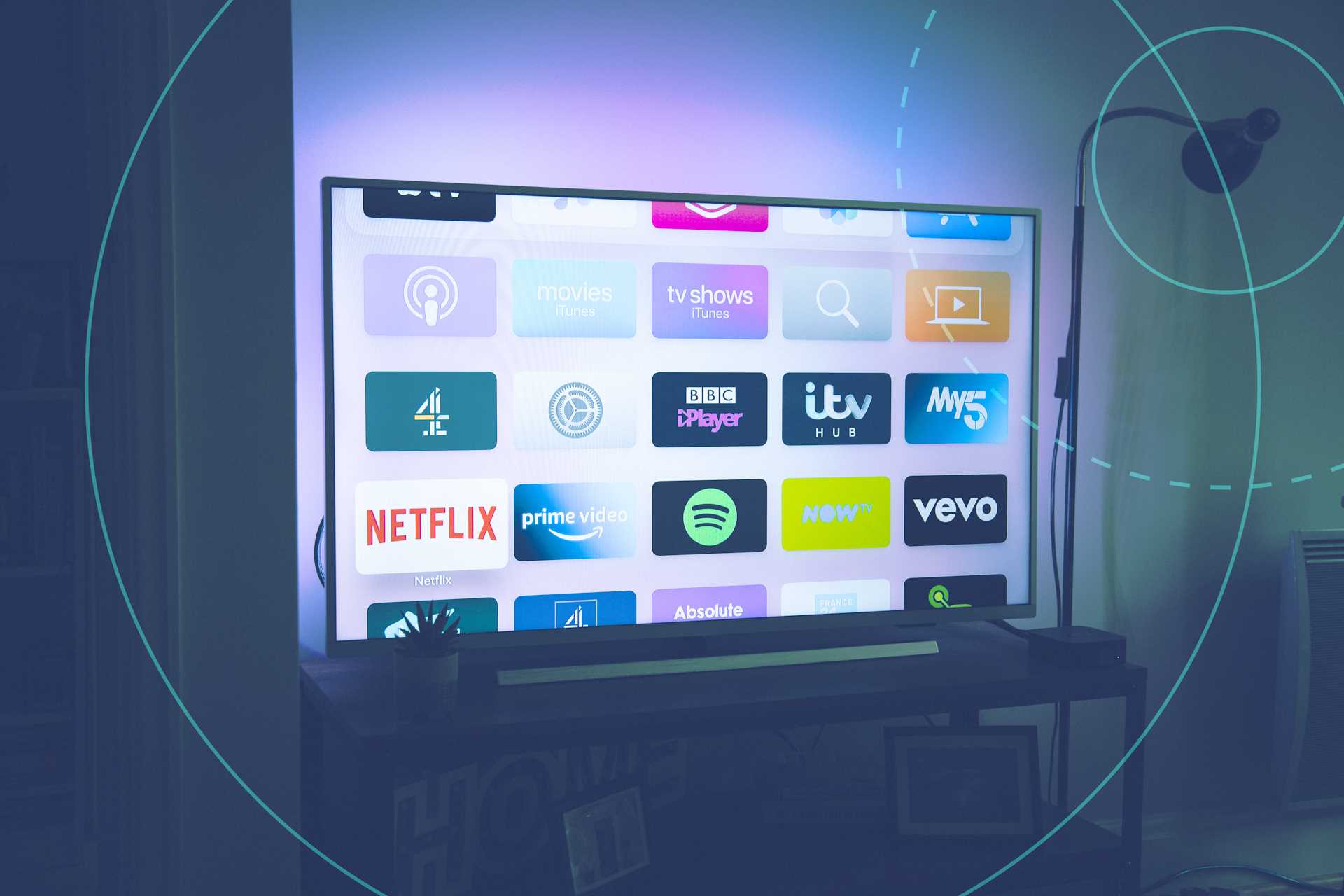2024 is fast approaching. Discover your comprehensive guide for mastering tourism and hospitality marketing in the coming year.
Start planning now for a year of success
According to Skyscanner’s Travel Trends 2024 report, 85% of US travelers plan to take the same number, if not more, trips abroad in 2024 compared to 2023. After facing unprecedented challenges in recent years, it looks like the travel and hospitality industry is finally getting back on its feet and poising for a resurgence, so the role of marketing has never been more important.
Traveler expectations are evolving, technology continues to advance, and sustainability is taking center stage. To navigate this increasingly dynamic environment, travel businesses must focus on strong marketing campaigns to not only survive but thrive. Whether you're a seasoned marketing manager for an international hospitality business or a small business owner looking to make a splash in the travel industry, this guide will equip you with the knowledge and strategies needed to stand out in a crowded marketplace.
We'll uncover the latest hospitality marketing trends, discuss proven travel marketing tactics, and explore some inspiring travel marketing examples. From understanding the post-pandemic traveler's mindset to harnessing the power of personalization, this guide is your compass in the ever-changing world of travel and hospitality marketing.
The Current Travel Landscape
Before we dive into the strategies and tactics that will define hospitality and travel marketing this year, it's crucial to understand the current state of the industry. Here are some key factors shaping the landscape:
Post-Pandemic Recovery
The hospitality industry is rebounding, with travelers eager to explore once again. However, the aftermath of the pandemic continues to influence traveler preferences with a heightened focus on safety, flexibility, and hygiene. To succeed in 2024 and beyond, travel marketers must adapt to these changes:
-
Prioritize Safety: Safety remains paramount for positive customer experiences in 2024. Communicate your health and safety measures on your website and in marketing materials. Share success stories and testimonials from travelers who felt safe during their experiences.
-
Embrace Flexibility: Travelers crave flexibility in their plans. Highlight your flexible booking policies, refund options, and easy rescheduling procedures to instill confidence — getting sick before a flight shouldn’t mean losing thousands of dollars.
-
Harness User-Generated Content: Encourage travelers to share their experiences on social media and your website. User-generated content serves as authentic, word-of-mouth testimonials and can significantly influence potential customers.
Demand for Personalization
Personalization is a necessity in modern marketing for hospitality businesses. With countless travel destinations, vacation experiences, and amenity options available, travel companies must understand who they want to reach and what’s important to their target audiences. Here are four ways to personalize your marketing:
-
Go Deep on Data: Collect and analyze customer data to gain insights into their preferences and behaviors. Utilize this data to personalize your hospitality brand’s marketing messages, offers, and customer experience.
-
Segment Your Campaigns: Craft personalized campaigns for TV, social, and email based on customer behavior and interests, and use targeting to choose who will see your campaigns. Include recommendations for destinations, accommodations, or activities that align with their preferences.
-
Implement AI and Chatbots: Artificial intelligence (AI) and chatbots can act as powerful digital marketing tools and provide personalized recommendations and assistance to website visitors. They can help travelers find suitable options and answer FAQs quickly.
-
Offer Customizable Packages: Allow travelers to customize their trips. Offer various options for accommodations, activities, and dining, giving them the flexibility to create their ideal vacation.
Technology-Driven Travel
Technology plays an integral role in travel planning and experiences. According to Hilton’s 2024 Trends Report, which shows 80% of travelers feel it’s important to be able to book entirely online and 76% of global travelers appreciate travel apps that reduce the friction and stress of travel, connectivity and personalization powered by technology is set to heavily influence the way travelers book.
Travelers are using smartphone apps and online platforms to research, book, and enhance their trips. Embracing technology is essential for effective marketing. Use these tips to get up to speed:
-
Mobile-Friendly Websites and Apps: Develop user-friendly and responsive websites optimized for mobile devices. Consider creating a dedicated mobile app that offers a seamless customer experience, but only if it makes sense for the hospitality services you offer. Mobile apps can provide users with personalized recommendations, exclusive deals, and easy access to booking, itinerary, and check-in details.
-
Online Booking Engines: Let travelers search for flights, accommodations, and activities in real time. Integrate AI chatbots to provide instant assistance and answer common traveler queries. Chatbots can also facilitate bookings, making the process efficient and convenient.
-
Blockchain for Secure Transactions: Explore this option to enhance the security and transparency of transactions. The blockchain can be used to verify traveler identities, manage loyalty programs, and streamline payment processes. The decentralized nature of blockchain ensures data integrity and reduces the risk of fraud, instilling confidence in travelers during the booking process.
Hospitality Marketing Tactics for 2024
Like many other industries, the digital revolution continues to heavily impact the hospitality industry. Travelers now turn to the internet for inspiration, research, and bookings. This shift has given rise to various online marketing tactics, which, when integrated with traditional methods, can create a winning strategy and heighten brand awareness. In this section, we'll explore some tried-and-tested marketing tactics to consider for your travel marketing plan.
Content Marketing
Create high-quality, informative, and engaging content that resonates with your audience. This can include blog posts, travel guides, videos, podcasts, and more.
Search Engine Optimization (SEO)
Improve your website's search engine visibility with effective SEO practices. Conduct thorough keyword research, optimize your site's structure, and regularly publish relevant content based on the latest trends.
Organic Social Media
Social media platforms are invaluable for reaching travelers. Maintain a strong presence on platforms like Instagram and TikTok. Share visually appealing content, and user-generated content, and engage with your target audience.
Influencer Marketing
Collaborating with travel influencers can be an effective way to reach a wider audience. Ensure that influencers align with your brand and values, and work together on authentic and engaging content.
Search Advertising
Invest in paid advertising on platforms like Google. Set a budget, target relevant keywords and demographics, and analyze pay-per-click performance metrics.
Paid Social Media
Complement your organic social media efforts with paid social media marketing. Determine a budget, set your audience parameters, and make sure you’re promoting content that’s relevant and authentic.
Connected TV (CTV)
Reach a greater number of the right people by advertising on streaming platforms. With tens of thousands of unique audience segments, CTV and OTT channels help you target more precisely than search and social while ensuring your captivating content and immersive visuals entice people to travel.
Email Marketing
Email marketing remains a powerful tool for nurturing leads and retaining customers. Send personalized offers, travel tips, and updates to subscribers. In 2024, email automation and personalization will become even more critical.
Reviews and Testimonials
Expedia’s Unpack ‘24 travel trend report notes that 90% of global travelers say the vibe of a hotel is important to them. Making sure you pass the vibe check means having great reviews.
Think we’re overusing the word, “vibe”? Melanie Fish, chief trend tracker for Expedia Brands, mentions that “guests are increasingly calling out the less defined ‘vibe’ of a hotel—the term appears over 20,000 times in Hotels.com reviews in the past year.”
Prompt satisfied customers to leave reviews and testimonials on platforms like TripAdvisor, Google, Hotels.com, and others. Highlight positive feedback on your website and marketing materials to start curating your… vibe.
Loyalty Programs
Implement a customer loyalty program to reward repeat customers. Offer discounts, exclusive access, or points-based systems that encourage travelers to book with you again.
Augmented Reality (AR)
AR can enhance the travel experience by providing interactive maps, historical overlays, and virtual tours of destinations. Consider incorporating AR into your marketing materials to engage travelers in innovative ways.
Virtual Reality (VR)
VR offers immersive travel experiences, allowing potential customers to virtually explore destinations. Create VR content to showcase accommodations and attractions, allowing travelers to "visit" before booking.
Hospitality Marketing KPIs
To steer your travel marketing campaigns toward success, you must have a clear understanding of which metrics to monitor. These metrics help you gauge the effectiveness of your campaigns while enabling you to fine-tune your strategies and ensure you're on course to reach your goals.
Let’s explore the essential metrics that travel marketers should track to navigate the seas of success.
Website Traffic and Engagement Metrics
-
Website Traffic: Monitor metrics like the number of visitors, unique visitors, and page views to understand how many travelers are interacting with your online content.
-
Bounce Rate: Bounce rate measures the percentage of visitors who navigate away from your site after viewing only one page. A high bounce rate may indicate your landing pages need improvement.
-
Average Session Duration: This metric reveals how long visitors spend on your website. Longer sessions signal deep engagement with your content.
Conversion Metrics
-
Conversion Rate: Conversion rate measures the percentage of visitors who take a desired action like booking a trip, subscribing to your newsletter, or downloading a travel guide. Tracking this metric helps assess the effectiveness of your calls to action and booking processes.
-
Cost per Conversion (CPC): CPC calculates the cost incurred to acquire a lead or conversion. Knowing your CPC allows you to evaluate the efficiency of your advertising spend.
Email Marketing Metrics
-
Open Rate: The open rate indicates the percentage of recipients who opened your email. Higher open rates suggest your subject lines and content are engaging.
-
Click-Through Rate (CTR): CTR measures the percentage of email recipients who click on a link within your email. It indicates how effectively your email content and CTAs drive engagement.
-
Conversion Rate: Similar to website conversion rate, email conversion rate tracks the percentage of recipients who take desired actions after clicking on a link within your email, like booking a trip or signing up for a newsletter.
Social Media Metrics
-
Follower Growth: Track the growth of your social followers over time to understand the reach and impact of your travel ad campaigns.
-
Engagement Metrics: Keep an eye on metrics like likes, comments, shares, and retweets. Engagement metrics reveal how well your content resonates with your social audience.
-
Clicks and Referral Traffic: Monitor the number of clicks on links and the amount of referral traffic generated from social platforms to your website.
ROI Metrics
-
Return on Ad Spend (ROAS): ROAS measures the revenue generated for every dollar spent on advertising. It provides insight into the effectiveness of your advertising campaigns and allows for better revenue management.
-
Customer Lifetime Value (CLV): CLV estimates the total revenue a user is expected to generate over their lifetime as a customer. Understanding CLV helps you assess the long-term value of your marketing efforts.
Customer Satisfaction and Reviews
-
Net Promoter Score (NPS): NPS measures customer satisfaction and loyalty. It asks customers how likely they are to recommend your travel services to others. High NPS scores indicate satisfied customers who may become brand advocates who offer free word-of-mouth marketing.
-
Online Reviews and Ratings: Monitor online reviews on platforms like TripAdvisor, Yelp, and Google My Business. Positive reviews boost your reputation, while negative feedback can signal areas for improvement.
Inspiring Hospitality Advertising Examples
Towering peaks cloaked in mist at the first light of dawn. A cascade of white-water rafters navigating through roaring rapids, their shouts of exhilaration echoing off the canyon walls. Mountain bikers traversing rugged trails, their wheels kicking up a flurry of autumn leaves. The sun setting behind jagged summits, a campfire blazing, and a diverse group of thrill-seekers under a star-studded sky. A pulse-pounding soundtrack drives home the sense of adventure.
The travel industry consistently crafts some of the most captivating and memorable marketing campaigns in the world. In this section, let’s explore some travel marketing examples that set a high bar for creativity, innovation, and impact.
Visit Norway: "Sheep with a View"
Visit Norway took a creative and humorous approach to promote tourism in the country's stunning landscapes. The “Sheep with a View” campaign featured livestreamed videos of sheep grazing in picturesque locations, allowing viewers to virtually experience Norway's beauty.
Why we loved it:
-
The campaign's quirky concept and livestreaming of sheep captured attention.
-
It highlighted Norway's breathtaking landscapes and encouraged travel.
-
The campaign's livestreams generated significant buzz and engagement.
Southwest Airlines: "Transfarency"
Southwest Airlines introduced its "Transfarency" campaign, which highlighted its commitment to transparent pricing and customer-friendly policies. The campaign aimed to differentiate the airline from competitors and build trust with travelers.
Why we loved it:
-
It resonated with travelers seeking straightforward and honest airline experiences.
-
It effectively set Southwest apart from competitors in a crowded market.
-
By emphasizing fair pricing and customer-friendly policies, it promoted the brand’s desire to build trust and loyalty among passengers.
For some more examples of our favorite travel ads in recent years from companies like Airbnb and Emirates, check out our recent blog.
Hospitality Marketing in 2024 and Beyond
This year, the travel and hospitality industry is filled with opportunities for those willing to adapt and innovate. By understanding the current travel landscape, embracing proven and emerging marketing tactics, and prioritizing data-driven marketing efforts, your travel business can thrive in this dynamic and competitive environment.
Keep a watchful eye on emerging technologies, stay agile in the face of uncertainty, and remain committed to delivering exceptional travel experiences for your target audience. With the strategies outlined in this ultimate guide to travel and hospitality marketing in 2024, you'll be well-equipped to navigate the coming year and beyond.







